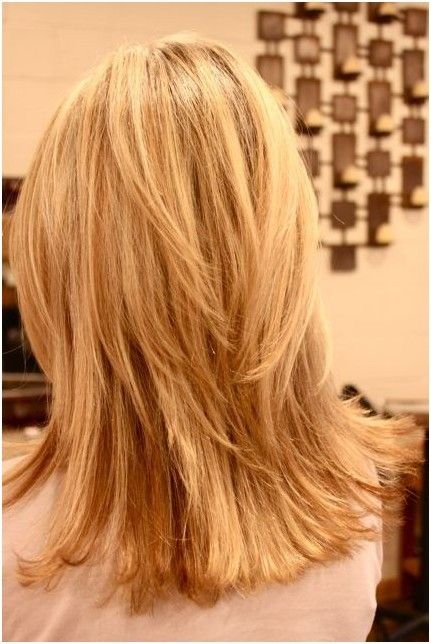Table of Content
- How to Cut Layers in Short Hair | Step-by-Step Guide
- Here's How To DIY Perfect Hair Layers At Home
- How to Cut Your Hair at Home Using the Ponytail Method
- How to cut layers in long hair:
- What tools do you need to layer short hair at home?
- Preserve Your Layered Haircut with a Good Hair Care Regimen.
- Which are the best bangs for your face shape?
As a general rule, you should aim to buy shears with a blade that’s approximately the size of your middle finger. The handle of the shears should then fit comfortably in your palm. Point the ends of your scissors into the ponytail and snip into the newly blunt ends. This will soften the blunt appearance you made when you initially chopped it into a straight line. Most people instinctively keep their chin down when cutting, but try to fight that urge and keep your chin up for the most accurate trim.
This will allow you to section off the hair on the top of the head. Comb the hair towards the top of the head, twist, and secure it with a clip. Comb, twist, and clip the hair on the left and right sides of the head.
How to Cut Layers in Short Hair | Step-by-Step Guide
Make sure to take your time here and avoid drastic chops. The time has come to pull out your shears. Take the front portion of your top box section and pull it taught in front of your face. You should keep your hair at a 90-degree angle from your forehead, with your index and middle fingers holding it. Parting short hair for layering will feel counterintuitive, as you’ll need to gather hair on both sides of the crown of your head to create a “top box” appearance. Instead of cutting your hair too much, start gradually.

On the other hand, fine-toothed combs are useful in parting your hair, especially for haircutting and hairstyling. Hence, having a combination of the two comb types will be convenient for you. You are not required to buy a pair of cutting shears used by hairdressers but having one would make it easier to chop your hair.
Here's How To DIY Perfect Hair Layers At Home
To start, cut only 1 to 2 inches (2.5 to 5 cm), and then trim a bit more if necessary. Hold a small strand of hair from the front on the left side to use as the first guide. Slide your fingers to the ends until you reach the place where you would like to cut the hair and trim the excess. Then continue cutting the rest of the section using the guide. After you know the front is looking good, it's time to bring the back forward and see how it all blends together.

You can also opt for a V-shaped layered haircut if you don’t want to give up on your Rapunzel-like tresses. Before you start holding a pair of shears and snip those hair strands away, you should first consider the most suitable layered haircut for your tresses. Here are some things you need to ponder before you get your hair chopped. To layer short hair at home, you need a high-quality pair of cutting shears, a comb, a front and back mirror, and a towel to catch cut hair. You should also ensure that your hair remains damp with the help of a spray bottle.
How to Cut Your Hair at Home Using the Ponytail Method
Using a sharp scissor, trim the excess hair. Throughout the cutting your own hair layers process, you will use 1 static guide to cut the rest of the strands. In this way, the result will be messy layers of different lengths throughout your hair. Detach a small strand of hair from the top of your head.
Unclip the left section and let and hang over the bottom layer. Use the bottom layer as a guide to determine how much hair to trim off the second layer. Rinsing your hair with shampoo helps get rid of your hair and scalp’s greasiness. It’ll also make it easier for you to hold your hair securely while trimming the sections.
When your hair dries, it will shrink up a little. It's common to cut the shortest layer just below the earlobe, or right at the jawline. Use the picture you took of yourself as a reference. Alternatively, for longer hair, cut the shortest layer right at the shoulders.
Meanwhile, comb the loose hair on either side of the top box. So, with your hair damp, wrap a towel around your shoulders and begin parting your hair using a comb. From there, mark where you want each of your layers to fall. Therefore, we recommend taking a photo of yourself with your hair down and combed. With his or her back to you, have him or her look down to the bellybutton and cut the center section straight across.
Now, I would recommend never cutting your length above the chin. Following this advice will ensure that your shortest layer falls no higher than your jawline. If you desire to have a longer fringe or side bang, I'd suggest leaving those bits out and blending them into your layers after the bulk of your hair is cut. Then, determine how much length you want to cut off. If you aren't sure, start small with 1/2" or 1" . If you don't cut enough off the first time around, you can always go back through this process again because well, you can always go shorter.

I-want-new-hair-right-now dreams—I just want you to do what’s best for your hair, k? “A trim is definitely better if you go with a pro,” says hairstylist Kamara Brown Lewis. Plus, “if you mess up, you’ll end up needing a professional—and more than likely, you’ll have to go shorter than you initially wanted,” Thevenot says.
However, mastering this skill isn’t enough; you need to maintain your layered hair’s healthy appearance by practicing a good hair care regimen. Keep your layers soft and smooth by using hair growth conditioners and apply some hair growth serums for more durable and longer locks. Finally, when you’re mentally preparing to cut layers in your short hair, always err on the side of cutting longer layers. Cutting layers in short hair requires a detailed plan to maximize your success. There’s little room for error, given that you’re already working with a short head of hair.
Women with a square-shaped face will look great on short layered bobs. On the other hand, those with rectangular-shaped faces can sport layered cuts with fringes and bangs. Women with oval-shaped faces who want to maintain their long hair can still have minimal layers for extra texture.




